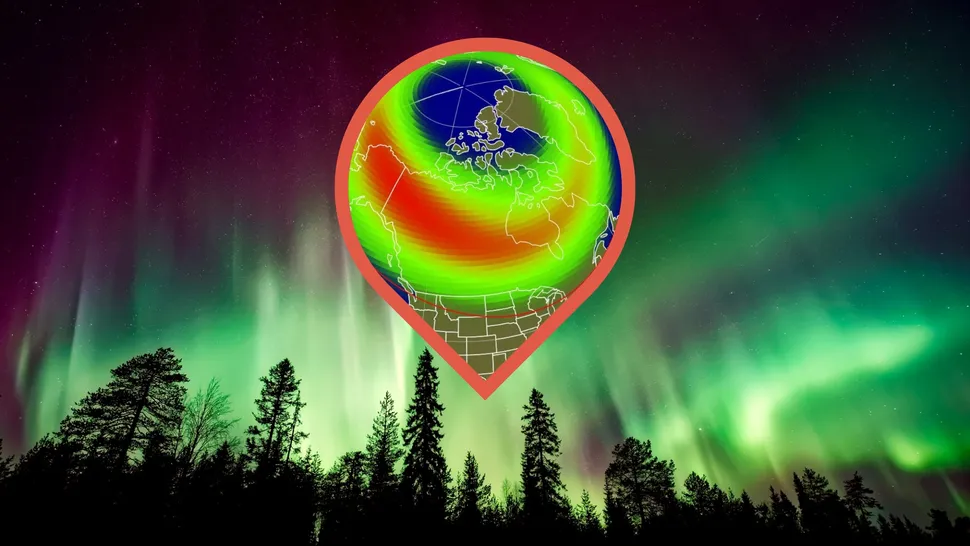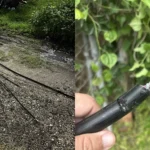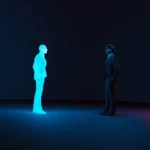The night sky is often a canvas for astronomical wonders, and few are as captivating as the Northern Lights, or Aurora Borealis. This breathtaking natural light display typically graces the polar regions, but tonight, a rare and exciting opportunity presents itself.
Celestial mechanics are aligning to potentially bring this vibrant spectacle much further south, making it visible to millions across parts of the United States. This extraordinary event is fueled by a dynamic interplay between our sun and Earth’s magnetic field.
According to the National Oceanic and Atmospheric Administration’s (NOAA) Space Weather Prediction Center (SWPC), unsettled geomagnetic activity triggered by high-speed solar winds could spark the mesmerizing northern lights over parts of the U.S. tonight, specifically spanning June 26th to June 27th. This anticipated display is not a random occurrence; it’s the direct result of a “giant hole” in the sun’s atmosphere.
This colossal coronal hole has rotated to face Earth, unleashing a powerful stream of high-speed solar wind directly towards our planet. As this solar wind relentlessly slams into Earth’s protective magnetic field, it creates significant disruptions, which in turn can lead to geomagnetic storms and, consequently, the vibrant auroras we hope to witness. Prepare to look up, as the heavens might put on a truly unforgettable show!
The Science Behind the Spectacle: Solar Activity Explained
Understanding the origins of the Northern Lights helps us appreciate their incredible rarity in certain latitudes.
Coronal Holes and High-Speed Solar Winds
The primary catalyst for tonight’s potential aurora display across the United States originates directly from our sun. The culprit is a phenomenon known as a colossal coronal hole. These are vast, dark regions in the sun’s outer atmosphere, the corona, where magnetic field lines stretch open into space instead of looping back down. This configuration allows high-speed solar wind to stream outward at incredible velocities, often two to three times faster than the typical solar wind.
Currently, one such significant coronal hole has rotated to directly face Earth. This alignment means that it is now actively sending a powerful stream of high-speed solar wind our way. This continuous flow of energized particles travels millions of miles through space, carrying with it charged plasma and magnetic fields. When this fast-moving solar wind eventually reaches our planet, it doesn’t just pass by. Instead, it inevitably slams into Earth’s protective magnetic field, a natural shield that deflects most of the sun’s harmful radiation. This impact creates significant disturbances in our planet’s magnetosphere, setting the stage for the captivating light show that is the aurora.
Geomagnetic Storms and Aurora Formation
The collision of the high-speed solar wind with Earth’s magnetic field is the crucial step in the formation of auroras. As the solar wind particles, primarily electrons and protons, penetrate and disrupt our planet’s magnetosphere, they cause a phenomenon known as geomagnetic activity. This disruption can escalate into geomagnetic storms, which are classified on a G-scale from G1 (minor) to G5 (extreme). These storms are essentially temporary disturbances of the Earth’s magnetosphere caused by external events, such as solar wind streams or coronal mass ejections (CMEs).
Space weather forecasters from both the U.K. Met Office and NOAA’s SWPC have issued predictions based on current conditions. They anticipate a chance of minor (G1) geomagnetic storms tonight, as geomagnetic activity is expected to remain mainly unsettled to active. During these storms, the energized particles from the solar wind are funneled along Earth’s magnetic field lines towards the polar regions.
When these particles collide with atoms and molecules of gases in Earth’s upper atmosphere, primarily oxygen and nitrogen, they excite these atoms. As the excited atoms return to their normal energy state, they release photons of light, creating the stunning visual display we know as the aurora. Different gases and altitudes produce different colors: excited oxygen atoms typically emit green or reddish light, while nitrogen atoms can produce blue or purple hues. This process creates a dynamic, shifting curtain of light that dances across the sky, offering a breathtaking view for those in the right location under the right conditions.
Where to Look: 10 US States on the Aurora View Line
Your best chance to witness the Northern Lights depends on geographical location and clear skies.
States with High Visibility Potential
Based on the latest NOAA forecast, specific regions within the United States are positioned favorably to potentially witness the Northern Lights tonight. The key factor for visibility is a state’s proximity to the auroral oval, an oval-shaped region centered around Earth’s magnetic poles where auroral activity is most common. We’ve compiled a list of 10 U.S. states that appear either fully or partially above this crucial aurora view line. These states are ordered from what is considered most likely to least likely to catch the lights, primarily based on how much of each state’s landmass lies within the projected auroral oval.
The states with the highest probability are those furthest north, with significant portions falling directly under or very close to the predicted path of auroral activity. This includes Alaska, which is almost always a prime viewing location for auroras due to its extreme northern latitude. Following Alaska, states like Montana and North Dakota have large northern expanses that could offer excellent viewing opportunities. Minnesota also makes the list, particularly its northern regions.
Moving slightly south, South Dakota and Michigan (specifically its Upper Peninsula) have a chance. States with a lower, but still possible, likelihood include Wisconsin, Maine, Idaho, and Washington, especially their northernmost parts. While these are the most promising locations, auroras can be unpredictable. Sometimes, strong geomagnetic storms can push the lights much further south than anticipated, offering unexpected views to a wider audience. Conversely, weaker activity or localized conditions might limit visibility even in predicted areas.
Factors Influencing Aurora Sightings
While being located in one of the listed states significantly increases your chances, auroras are notoriously fickle, and their visibility depends on a delicate alignment of several conditions. Sometimes, strong geomagnetic activity can indeed make them appear much farther south than predicted, surprising observers in unexpected locations. However, at other times, even with favorable forecasts, they may barely show up at all, due to subtle shifts in solar wind or geomagnetic response. There are many critical conditions that have to align for the perfect show, making aurora hunting a blend of science and luck.
First and foremost, darkness is absolutely essential. With summer daylight hours extending late, especially in northern latitudes, this can be a challenge. Your best window of opportunity for spotting auroras typically falls around 1 a.m. local time, when the sky is at its darkest. Second, clear skies are non-negotiable. Any cloud cover will obscure the view.
Third, escaping light pollution is paramount. If you’re in one of the states listed, your best bet is to head to a north-facing location, far away from city lights. Urban glow can easily wash out the faint greens and purples of the aurora, making them invisible to the naked eye. Even small towns can produce enough light to hinder visibility. Finally, your own vision and perception play a role. Auroras can appear quite faint at lower latitudes, sometimes resembling a whitish glow or a faint cloud. Patience is key, and allowing your eyes to fully adjust to the darkness (at least 20-30 minutes) can significantly improve your ability to discern the lights.
Maximizing Your Chances: Tips for Aurora Chasers
Enhance your aurora viewing experience with practical advice and helpful technology.
Essential Viewing Tips
If you find yourself in one of the U.S. states listed as having potential aurora visibility tonight, there are several practical steps you can take to maximize your chances of witnessing this breathtaking celestial display. The first, and arguably most important, tip is to head to a north-facing location. Auroras typically appear closer to the horizon from southern latitudes, so ensuring you have an unobstructed view of the northern sky is crucial. This means finding an area free from tall buildings, dense trees, or hills that might block your line of sight.
Secondly, and equally critical, is to get far away from city lights. Light pollution is the greatest enemy of aurora visibility. Even a distant glow from a town can completely wash out faint auroras, making them impossible to see with the naked eye. Seek out dark sky areas, rural roads, or state parks if possible.
As previously mentioned, with summer daylight lingering late, patience is key. Around 1 a.m. local time is typically your best shot, as this is when the sky will be at its darkest. It’s also important to allow your eyes to adjust to the darkness for at least 20-30 minutes before you expect to see anything. Avoid looking at your phone screen or any other light source during this time, as it will reset your night vision. Finally, dress warmly, even on what seems like a mild summer night, as temperatures can drop, and you’ll likely be standing still for extended periods.
Leveraging Technology for Better Sightings
Modern technology can be a powerful ally in your quest to spot the Northern Lights, especially when they are faint or appear lower on the horizon. One of the most effective tools you already likely own is your smartphone camera. Surprisingly, smartphone cameras are often much more sensitive to low light than the human eye and can pick up faint auroras that your eyes might miss. This is due to their ability to collect more light over a short exposure time.
To use this to your advantage, simply open your camera app and scan the sky, particularly towards the north. If your camera catches a hint of green or purple on the screen, even if you can’t see it clearly with your naked eye, then you’ve found something! Once your camera confirms a potential sighting, focus your attention there, allowing your eyes to adjust to that specific area.
However, don’t just fixate on one spot. Auroras can pop up in front, behind, or right overhead, as they are dynamic phenomena that can shift and expand. It’s crucial to glance around the entire sky periodically. To truly optimize your aurora hunting, consider downloading a space weather app that provides real-time forecasts based on your specific location.
These apps often integrate data from NOAA and other space weather agencies, offering valuable metrics like the Kp-index (a measure of geomagnetic activity) and clear visibility predictions. One excellent option, frequently recommended and personally used by aurora chasers, is “My Aurora Forecast & Alerts,” which is readily available for both iOS and Android devices.
Any similar app should also work well. For those who want a deeper understanding of the underlying space weather conditions, the “Space Weather Live” app (also available on iOS and Android) is an excellent resource, providing detailed scientific data that can help you gauge the favorability of conditions for aurora sightings. These tools greatly enhance your ability to be in the right place at the right time.
Don’t Miss This Rare Aurora Opportunity
Tonight offers a rare and exciting opportunity for millions in the United States to witness the enchanting Northern Lights. Driven by a powerful solar wind from a coronal hole on the sun, geomagnetic storms are set to paint the northern skies with vibrant hues. From the expansive wilderness of Alaska to the northern reaches of Washington, ten US states are positioned for potential aurora visibility.
Remember, while the forecast is promising, auroras can be elusive. Maximize your chances by seeking out dark, north-facing locations away from city lights and aiming for the darkest hours around 1 a.m. local time. Don’t forget to use your smartphone camera as a powerful tool to detect faint glows. By following these tips and utilizing space weather apps, you significantly increase your likelihood of experiencing this unforgettable celestial dance. Don’t miss this fleeting chance to connect with the incredible forces of our solar system and witness nature’s most spectacular light show!








